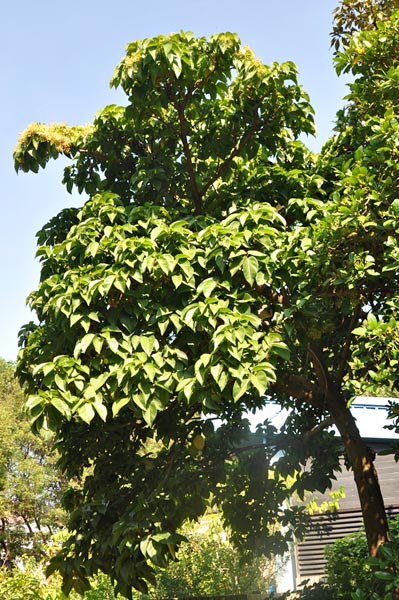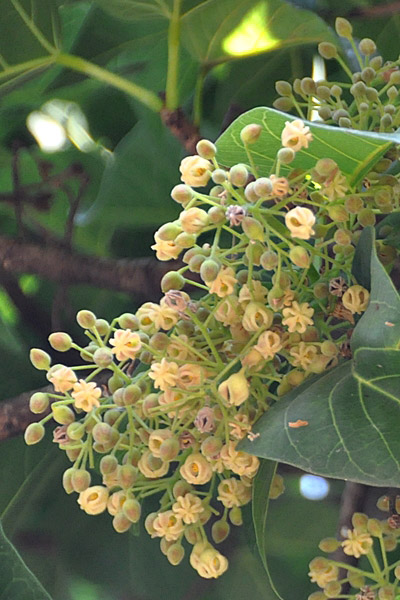Sterculia ceramica
The Lanyu sterculia is primarily distributed throughout the tropical regions of Southeast Asia and the Pacific Islands. In Taiwan, wild populations are found only on the offshore islands of Orchid Island (Lanyu) and Green Island. Because of its distinctive morphology and ornamental potential, it has also been introduced and cultivated in parks and green spaces on the main island of Taiwan.
The flowers of the Lanyu sterculia are small and lack petals, consisting instead of sepals densely covered with star-shaped hairs. Though tiny, their lantern-like shape and texture give them a delicate and unique charm. When in full bloom, the clusters of flowers are visually striking. The fruit is a bright red follicle that splits open when mature, revealing glossy black seeds within. This vivid contrast of colors attracts birds and other animals to feed on the fruits, aiding in seed dispersal and contributing to the species’ regeneration in the wild.
The scientific name of the Lanyu sterculia offers insight into its intriguing background. The genus name Sterculia originates from Sterculius, the Roman god associated with manure, referencing the unpleasant odor produced by the flowers of some species within the genus. The specific epithet ceramica means “ceramic” or “clay-like,” possibly describing the texture or color of the fruit. In its natural habitat, the species favors sunny, well-lit locations, often growing near river valleys or open coastal forests.
At the National Museum of Natural Science, Lanyu sterculia trees are cultivated in the Orchid Island Area of the Botanical Garden. The largest specimen grows near the side entrance of the Research and Education Center. Beneath several mature trees, numerous saplings have naturally regenerated, with some already replacing older trees and becoming key components of the landscape. From flowering through fruiting season, the trees attract a variety of wildlife—particularly birds and squirrels—that come to feed on the blossoms and fruits, creating a lively and ecologically dynamic scene within the garden.

